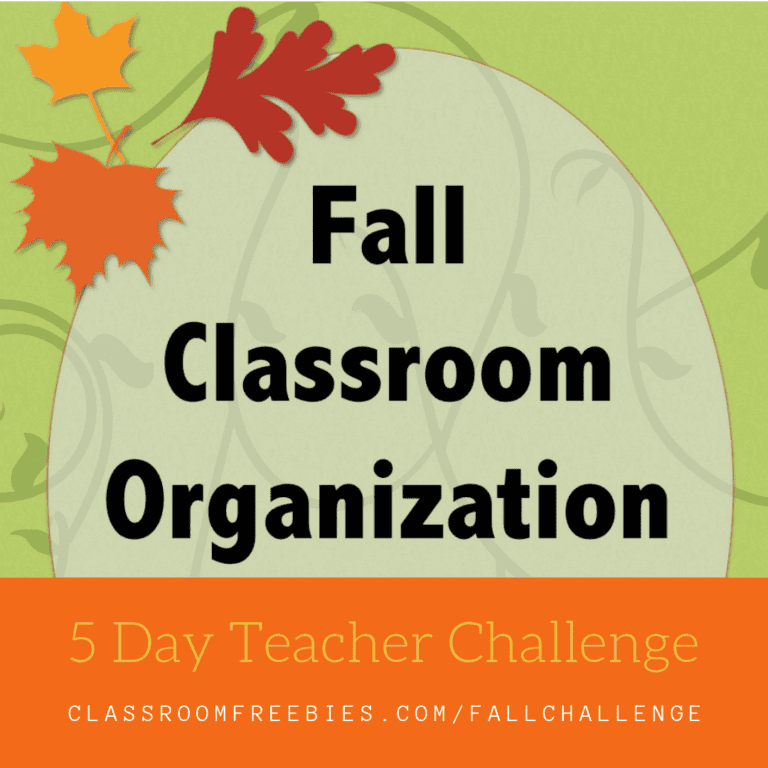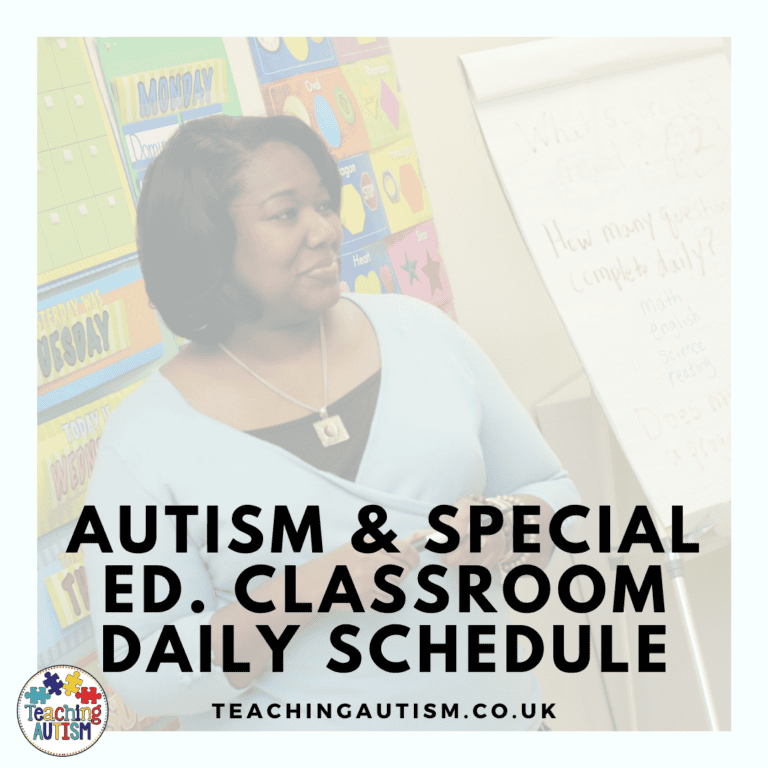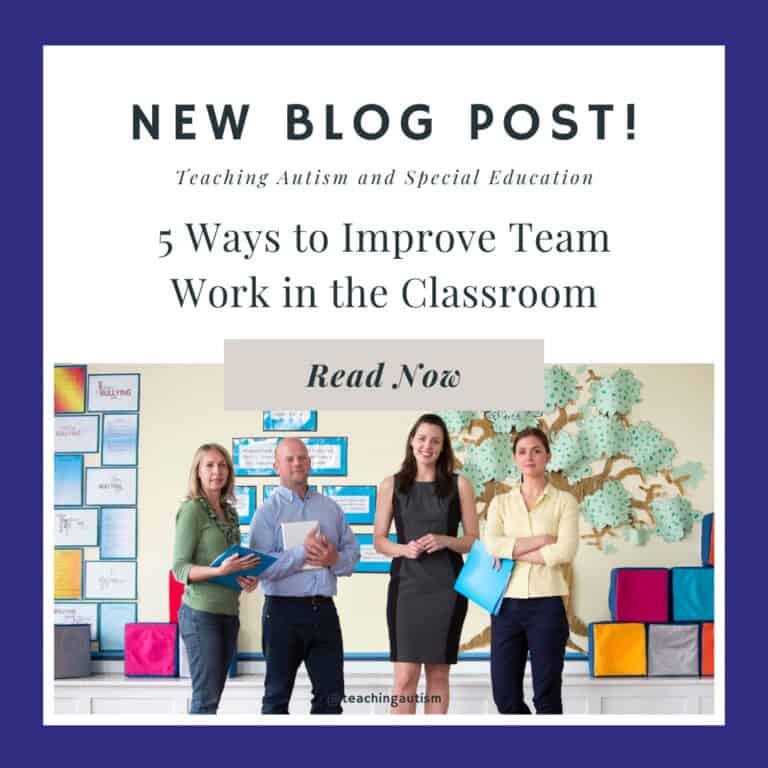Data Collection in Special Education Tips
One of the struggles in our lives – data collection in special education. It’s tough, let’s face it. And it’s probably not your most loved part of the job. But, it doesn’t have to be that tough!
Today I’m sharing with you my top 10 tips to make data collection in your classroom easier and less stressful.
I think we probably are all in agreement when we say that paperwork can be one of the most stressful parts of our jobs. And data collection can definitely be included there too. What data should we take? Are we taking too much? Too little? How do we record it? Who should record it? There’s just so many things to think about, and it’s easy to get quickly overwhelmed.
I’m currently in my 10th year in this field, and over the years I’ve been able to learn some great tips to help make data collection easier, and less stressful. And today, I’m so excited to be sharing my top 10 tips with you.
What is Data Collection?
I’ll answer the most obvious question first which is, what is data collection? And it’s honestly, exactly what it sounds like. Its how you are going to gather information – which is the data – and use this.
Tip #1 – Why
My first and biggest tip, is to first understand why you are taking data. This will help you understand what data you should be taking, when and how much. And honestly, the main reason that we take data is because it helps us to plan more effectively for our students about interventions, teaching strategies, targets – but it also helps us to analyse what is and maybe isn’t working and what needs to change.
I always tend to follow the rule where I take data on IEP goals, behaviour, instruction – in groups and 1-1 situations and social interactions. Depending on your school or setting, you make take this, or more or less than this.
Tip #2 – How
Second, find the method of collecting data that works best for you. And this is going to look different for everyone. The same way that we all plan differently. Some of us like to plan digitally, others, like myself, love to have an actual planner and write things down. So, it’s important that you find the data collection that works best for you, not what your best teacher friend is doing, not what Instagram says you should be doing.
So, first decide, are you going to do it digitally or on paper. Then decide, how are you going to do it? Are you going to have a daily sheet where you track data? Or are you going to do it week-by-week? You may decide to have a monthly progress sheet that you can track data over a period of month and compare it month by month.
When deciding, be sure to liaise with your up-line as well. You may have to take weekly data, or you may have to take monthly data.
Tip #3 – Delegate
Tip number 3, is not to do it all by yourself. Many of us are lucky enough to have a great team of assistants and professionals who work with us. And don’t be afraid to delegate. Have meetings with your staff to show them an example of how you want the data collecting. Then, my best tip, is to assign these to staff so they know exactly what they are doing. For example, on your weekly or daily timetable, let your staff know what student – or students – they’ll be working with and the data that they need to collect. This takes more pressure off you, but also helps to give them something to be in charge of as well, and shows your trust for them too.
Tip #4 – Using the Data
My next tip, is to make sure you’re using your data to help you with goals and objectives that students are working on. What does the data show you? Are the plans you have in place working? Is your student on track to meet their goal? What strategies are working best for them? What strategies aren’t working? These are all important parts of taking data – because you need to see what is and isn’t working.
Think how much easier your life is going to be when you go into that next IEP meeting and you have hard-proof to show everyone what is and isn’t going well, and what needs changing, if anything. It will make the meeting much less-stressful if you’re able to go in there and show actual proof.
Tip #5 – Easy Access
Tip number 5 is to have your data recording sheets easy to access for your staff. Keep them organised. For me, when we work on our morning work, we’ve always kept our recording sheets in that morning work binder. Staff pull it out and fill it in as the students complete it. For behaviour, we have a file that we can quickly refer to through the day. This goes month-by-month and allows us to recognise patterns in behaviours at certain times of the day or week.
For behaviours, you can also use tools like clicks that will help you record how often a behaviour occurs, and then use this to record your data at the end of the day.
Tip #6 – Colour-Coding
My next tip is about colour coding. I know, you probably see this all over the internet now, but honestly, it’s something that’s always worked really well for us. Each student is assigned their own colour, and once you put this into place, and everyone soon recognises what colour each student is, you’ll realise how much of a life saver it is, especially wen it comes to data collecting.
Tip #7 – Data Collection Bags
Tip number 7 is data collection bags. I like to have these set up ready for each individual student – again incorporating that colour coding. Inside each bag is everything I need for that one student to work on collecting all of the data I need – and these are usually for their IEP goals. It means I have everything on hand to quickly access what I need, and it makes data collecting a breeze. They’re set up in a such way so that anyone who opens the bag is able to understand what they need to do with the student to take data as well. This is especially great if you’re off school sick, or you’re out in meetings. Your staff will be able to continue with the data collecting for you. And that means less stress for you.
Tip #8 – Photographic Evidence
My next tip, is photographs. Each lesson, or activity, put a member of staff in charge of your iPad or class camera. They are in charge of taking photos of students. We like to put these together in a book on BookCreator in the iPad – with one book for each student focusing on their IEP goals. You’ll be amazed how handy these photos are when it goes for showing evidence of your students completing their IEP goals.
Tip #9 – Student Binders
Tip number 9 is to have a binder for each student just for their data. Separate it with those little separator pages and the tabs. Put your students data collection sheets in here. If you collect paper copies, scan then onto the computer so you have a back-up as well. This binder will be a life-saver if you ever need to back-up something you are suggesting. It also works great to look back on and see the progress your students are making.
Tip #10 – Keep it Simple!
My next tip is to keep it simple. Don’t go overboard making really complicated recording sheets. There’s honestly no need. You just need to collect the data that you need and it doesn’t have to be fancy. Don’t forget, you’re going to want your team of staff to help you fill these in, and you may even give the sheets to outside staff who provide services like speech and language therapists and occupational therapists so you want to make it super easy for them to understand what you want and fill it in as well.
BONUS Tip – ASAP.
My bonus tip is to take data as soon as possible. Don’t think about taking it at the end of the school day. Chances are, you’re probably going to forget what happened or what to write. If you physically can’t go and get the recording sheet, write a note down on a post-it note and put it inside your diary, or somewhere safe. Then, at the end of the day you can transfer the information to the recording sheet. I know life isn’t always ideal so we can’t always just run and record something, but taking the time to write it on a post-it note is going to help you make sure you don’t forget any important information. And I don’t know about you, but over the years, my memory is definitely starting to fade and I know I can’t rely on it to remember everything that happened. This is also where it comes in handy for you to have a little portable recording system.
So, those are my top 10 (+Bonus!) tips for effective and less stressful data collection in the classroom. If you have any tips that you’d like to share with us, or if you have any questions, please leave them in the comments section down below.
Or, if you prefer to listen to podcasts than read blog posts, you can listen to this one here.
If you found this blog post helpful, please consider sharing it on social media with your friends and colleagues.








